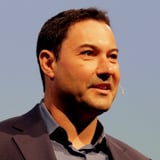Log in or create a free Rosenverse account to watch this video.
Log in Create free account100s of community videos are available to free members. Conference talks are generally available to Gold members.
Summary
In this month's videoconference, Sarah Coyle chats with community curator Alison Rand and the DesignOps Community on: How to apply human centered design to analytics Types of measurement for design operations What to do if you don't have an analytics team
Key Insights
-
•
Measuring design value is impossible without clear context and defined questions.
-
•
Sarah transitioned from reactive data support to strategic design metrics development.
-
•
USAA’s design practice has nearly 300 people, centrally organized under one Chief Design Office.
-
•
Design operations at USAA includes analytics, recruiting, program management, and quality and risk.
-
•
Starting measurement with the question or goal leads to more meaningful data insights than starting with raw data.
-
•
Human-centered design principles improve the way analytics is approached and applied in design.
-
•
Education for both data creators and consumers is critical to mature design data practices.
-
•
Design research measurement focuses on whether research is happening and how it influences decisions.
-
•
Small teams without analysts can leverage passionate designers interested in analytics and cross-team collaboration.
-
•
Information (meaningful context-rich data) is more valuable than raw data points alone.
Notable Quotes
"I realized that measuring the value of design is an impossible question without context."
"Value of design is never going to get a single answer because you need the who, what, and why."
"I help teams start with questions about what they want to learn before looking at data."
"Data is just single points; information is making that data meaningful through context."
"Most requests started reactive but evolved into more strategic metric definitions."
"I train people on the difference between data and information and on asking the right questions."
"We are just starting to do regular and frequent reporting across the entire design organization."
"If you don’t have an analyst, find designers passionate about analytics and educate them."
"Human-centered design can bring curiosity and empathy into traditional analytics work."
"Information experience needs wayfinding so people can find and use data easily."
Or choose a question:
















More Videos

"Conscious uncoupling is about identity — how one thinks of oneself defines oneself and how others define you."
Nalini KotamrajuResearch After UX
March 25, 2024

"The end of history illusion is that we think we're done evolving, but we vastly underestimate future change."
Dean BroadleyNot Black Enough to be White
January 8, 2024

"Racism doesn’t just hurt people like me; you’re hurting yourself by perpetuating beliefs that deny a greater humanity."
Denise Jacobs Nancy Douyon Renee Reid Lisa WelchmanInteractive Keynote: Social Change by Design
January 8, 2024

"What does ‘best work’ mean? It’s different for everyone, so our solutions have to be flexible and meaningful."
Kim Fellman CohenMeasuring the Designer Experience
October 23, 2019

"We mostly have something called a BYOE scenario or bring your own ethics."
George AyeThat Quiet Little Voice: When Design and Ethics Collide
November 16, 2022

"Visual style isn’t just enough to make something feel cohesive."
Nathan CurtisBeyond the Toolkit: Spreading a System Across People & Products
June 9, 2016

"We focus on delivering high quality but also moving fast—being comfortable negotiating that tension is important."
Greg PetroffThe Compass Mission
March 10, 2021

"Traditional design thinking and human-centered design rarely take localized nuances and global trends into account."
Chloe Amos-EdkinsA Cultural Approach: Research in the Context of Glocalisation
March 27, 2023

"We brought all the user journeys together with UX designers, content designers, product owners — it wasn’t just analytics and research in isolation."
Mackenzie Cockram Sara Branco Cunha Ian FranklinIntegrating Qualitative and Quantitative Research from Discovery to Live
December 16, 2022
















